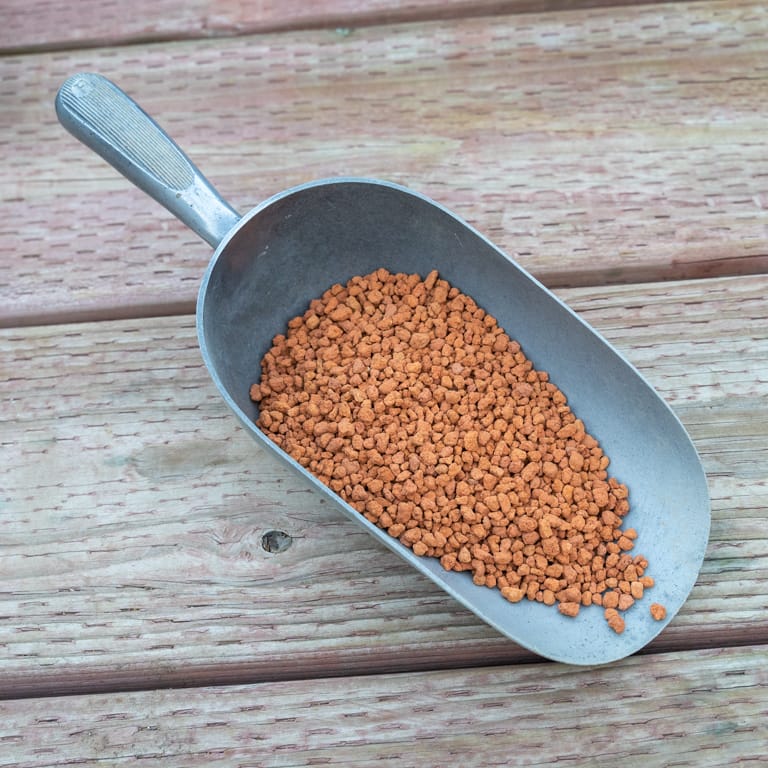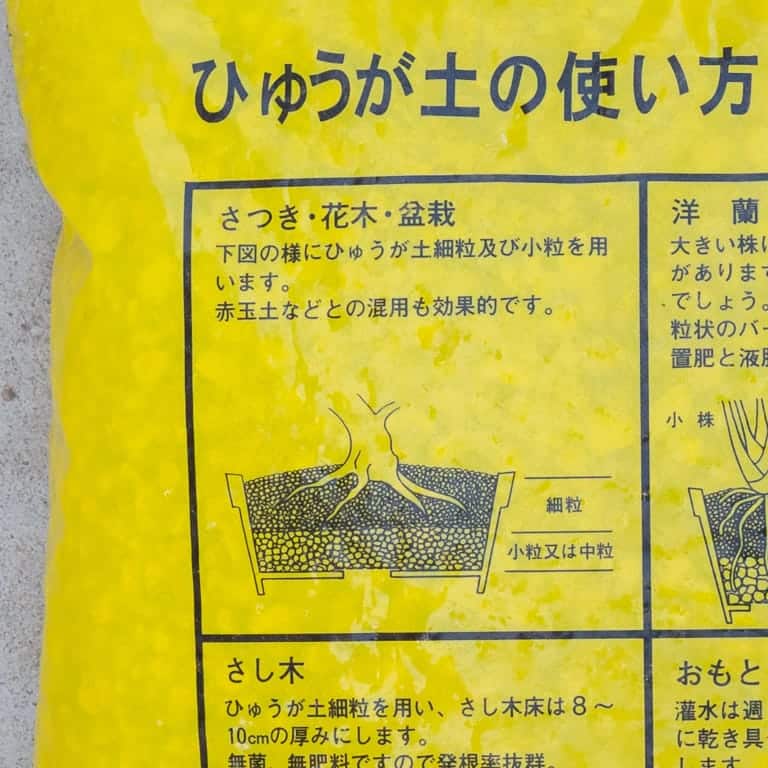Several years ago I wrote about bonsai soil in a post titled “All about akadama.” (If you haven’t read it, you can check it out here.)
I continue to get questions on the topic so I thought I’d provide a few updates.
Q. What is baked akadama and is it useful for bonsai?
Baked akadama is akadama that has been baked at temperatures of up to 800 degrees Celsius. The akadama becomes hard, almost like ceramic pebbles, at higher temperatures, which means it resists breaking down in the pot. It’s not commonly used for bonsai but it can be a component of bonsai mixes – it just won’t do the same job as non-baked akadama.

Orange-hued baked akadama
Q. Is heat-treated akadama the same as baked akadama?
No. Some brands of akadama are exposed to temperatures around 300 degrees Celsius in order to kill any organic compounds found in the akadama. Heat treatments are done to meet import requirements and do little if anything to harden the akadama. Most popular brands of akadama are air-dried instead of heat-treated.
Q. What are the differences between hard and soft akadama?
Over time, most akadama particles break down in the soil. The hardness or softness of the akadama affects the rate at which the particles break down.
Both hard and soft akadama can be used to great effect in the cultivation of bonsai. The selection of one over the other depends on one’s cultivation goals for a given tree or species.
For example, I might use a lower percentage of akadama (and a higher percentage of lava rock or pumice) when the particles are soft as this is an easy way to maintain good drainage or aeration.
In terms of the qualitative difference between the two, soft akadamas crumble easily between pinched fingers. Hard akadama particles are more difficult to break.
Q. What is the best bonsai soil particle size to use for my bonsai?
In general, smaller particles are a good fit for smaller trees and larger particles are a good fit for larger trees. Species that prefer moist environments (like wisteria or coast redwood) can benefit from smaller particle sizes as they provide greater water retention. Species that prefer drier root environments can benefit from mixes with larger particle sizes.
Q. What is a drainage layer and do I need one?
Drainage or aeration layers are layers of soil with lower porosity (more air). It’s common practice to improve porosity in the bonsai pot by using larger soil particles and/or particles that resist breaking down.
One common approach is to use the same soil components at the bottom of the pot as at the top of the pot but with larger particle sizes. Another approach is to use particles like pumice that resist breaking down (and weigh less!). Both approaches can encourage root growth in the lower region of the pot for species that resist growing roots in overly moist environments.

Instructions for using hyuga, Japanese pumice, indicating larger particle sizes along the bottom of the pot
Q. Do all bonsai benefit from akadama-based soils?
No! Lots of soil mixes that don’t contain akadama can be used to great effect. I’m currently using very little if any akadama for the development of young trees. My chojubai (dwarf flowering Japanese quince), for example, have been growing well in 100% lava rock (aka scoria or cinder).
Eric Schrader recently posted a great video on the topic on the Bonsaify channel. You can check it out here.
You can also read more about the topic in the post: “What kind of soil should I use for my bonsai?“
Q. Can I change my soil mix to accommodate my watering needs?
Yes! Many bonsai growers have limited time to water their trees and select soil mixes that help them meet their watering goals. If your trees dry out while you’re at work, try using smaller particle sizes or a higher percentage of components with good water holding capacity the next time you repot. If you live where temperatures are mild and your soil never dries out, try using mixes with larger particles or particles with a lower water holding capacity.
Q. Are there good alternatives to akadama?
Yes and no. I don’t know of any soil particle that does what akadama does in terms of its ability to hold and release water, hold and release fertilizer, and support root growth over very long periods of time. That said, there are particles with different characteristics that can do a great job supporting tree health and development.
Put another way, I’m happy to use akadama alternatives when akadama isn’t available, but I appreciate different things about these alternatives (see “What to do when akadama is in short supply” for details).
Fortunately, akadama remains available from a variety of outlets. Soil has been on my mind lately as I just received two new shipments and have plenty of hard akadama and hard akadama-based pre-mixes that are available for local pickup in the San Francisco Bay Area, online from the Indian Bonsai Art Online Store, and in bulk for orders of 50 bags or more.

Healthy roots
Have any questions (or suggestions) about bonsai soil? Leave them in the comments below!
✕
Subscribe to Indian Bonsai Art
New Posts Delivered Every Tuesday and Friday
